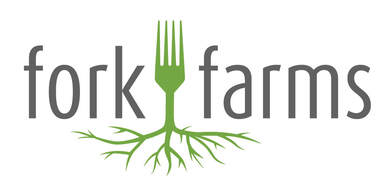|
Image courtesy The Madison Club, Madison, Wisconsin, USA There is nothing quite like working with freshly harvested produce. You can distinctly smell, feel and see the difference in quality - there is an unequivocal vibrance to the product. From fragrant, sweet and peppery basil to crisp, succulent romaine, you cannot help but notice the abundance of flavor in each bite. Now, imagine if you were able to have year-round access to this quality produce steps away from your kitchen. Within minutes, you could harvest, prepare and serve delicious food to your members. This might sound a bit like a culinary fantasy, but in reality, it is achievable when growing fresh produce hydroponically in a controlled environment. Growing produce where you cook and dine gives you complete control over supply chain, quality and freshness. An exceptional dining experience should be the highlight of the club experience for members. Diners are growing ever more concerned with the nutritional value and quality of their food. Offering the best ingredients year-round enables your culinary team to continuously meet and exceed their expectations. This is especially important when a club is looking to attract new members. Interest in innovative and sustainable culinary options provides a new opportunity for business growth. Growing produce hydroponically makes good business sense. Through recent technological advancements, hydroponic systems are affordable and have minimal operational expenses. Advancements in water use and lighting makes growing hydroponically the most efficient type of farming for leafy greens. Furthermore, product waste is significantly decreased due to the extended shelf life. Leafy greens are not sitting on trucks for days during transport, only to go bad within a few days of arriving. Produce stays fresher longer, giving your culinary team the opportunity to use every harvest in its entirety. Having this level of control over your produce elevates your culinary operation and delights and engages your members in new and exciting ways. Growing hydroponically is nothing new for humanity. In fact, early applications can be traced back to Egyptian civilizations, the Aztecs of Central America and even the legendary Hanging Gardens of Babylon. With its ancient roots, modern hydroponics provides solutions to some of our biggest agricultural challenges. In the United States, leaf lettuce is highly susceptible to contamination, weather and transportation disruptions. Up to 99% of lettuce is grown in California and Arizona, with production concentrated in just a few select regions. Over the last five years, unseasonably cold weather, drought, flooding and foodborne illness outbreaks have caused numerous nationwide recalls of lettuce products. Fortunately, local, indoor hydroponic food production is a cost-effective solution to these issues. Application of hydroponics is simple. The right amount of nutrients, combined with pH balanced water and the correct amount of light, results in consistent yields of highly nutritious leafy greens and other produce such as tomatoes, cucumbers and strawberries.
The design of any hydroponic system must meet specific space requirements, budgetary considerations and labor availability. That is why Fork Farms created the Flex Farm. When it comes to hydroponic growing, the Flex Farm is in a league of its own. The Flex Farm optimizes energy and labor efficiency, making it one of the easiest and most cost-effective hydroponic systems on the planet. Flex Farms are fully self-contained hydroponic growing systems that are safe, simple and versatile. They are designed to protect against agriculture based-food safety concerns without using any herbicides or pesticides. With just one mechanical part, minimal maintenance is required. Flex Farms are also portable and only need a standard electrical outlet and less than 10 square feet of space - about the same amount of space required for a standard home refrigerator. Anyone can unleash the power of fresh food with a Flex Farm. They cost less than $1.50 a day to operate and require minimal labor - about 2-3 hours a month total. In 28 days, you can grow more than 20 pounds of leafy greens. That’s more than 3,400 individual plants in one year. Compared to traditional agriculture, Flex Farms eliminate food miles and waste, grow 45 times more produce and require 97% less water. Best part, no heavy equipment or green thumb required! Clubs across the United States and internationally are seeking ways to attract and retain members. Innovation in the food and beverage space provides a unique opportunity to add value beyond the traditional club offerings. Club diners are becoming more conscious about healthy eating and high-quality ingredients. Growing food hydroponically provides clubs the opportunity to engage members in fresh dining experiences. If you are interested in learning more about how Flex Farms can bring innovation into your culinary and dining experience, contact Fork Farms at: Direct: 920.515.0730 Toll-Free: 877.886.7736 Email: [email protected]
0 Comments
Leave a Reply. |



